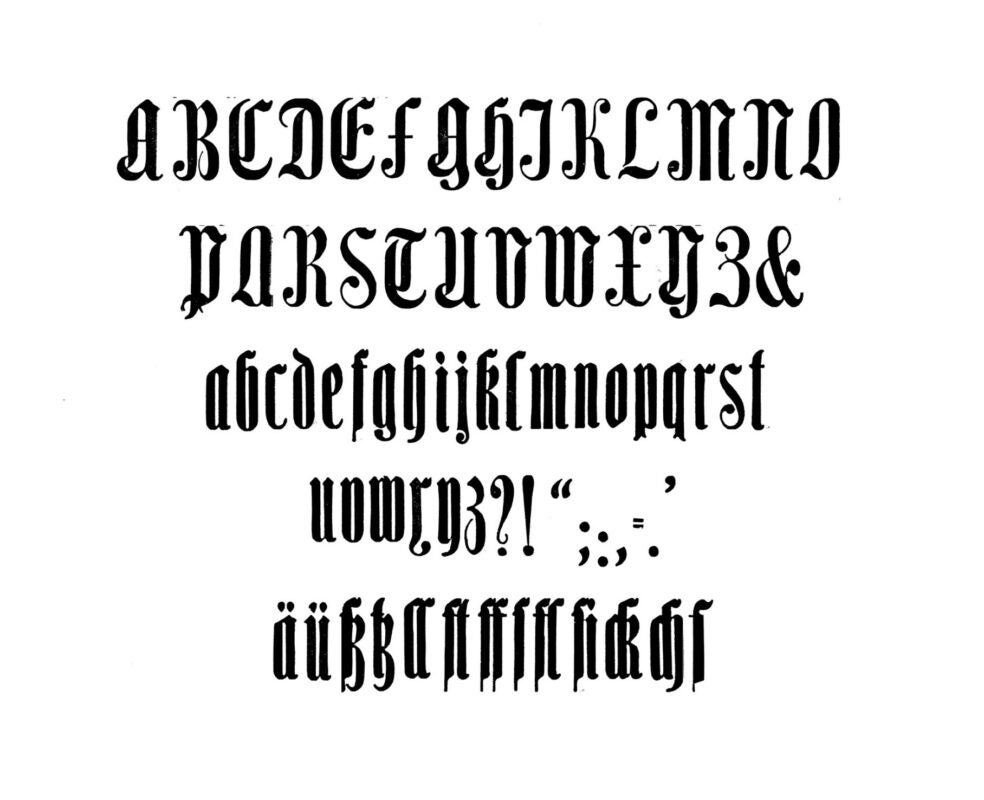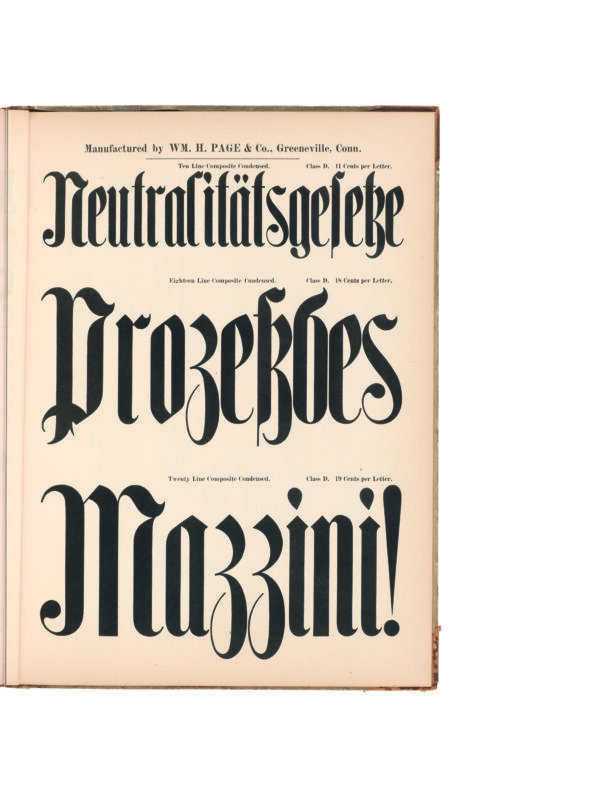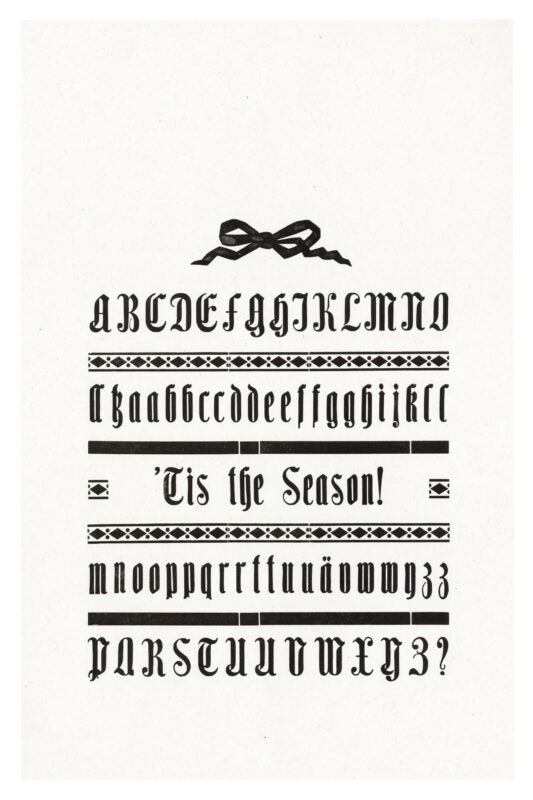Composite Condensed
6 Line
Box 165
Script | Blackletter | Uppercase & Lowercase
- This type measures 6 line in size and was produced with the end-cut method. The type block is stamped Wm. H. Page & Co. which was used by Page and Mowry between 1870–1876.
- This face was first shown as wood type by William H. Page in his 1870 Specimens of Wood Type.
- This cut of German was not shown in either American Wood Type or the folio.
Type name used by manufacturer:
Page Composite Condensed [606]
This is the Page cut.
Page appears to be the only wood type manufacturer to produce this face. Hamilton offered it after the acquisition in 1891.
Composite Condensed is a Schwabacher style blackletter.
Character Quantities
- A3
- B2
- C2
- D2
- E2
- F2
- G2
- H2
- I2
- J1
- K2
- L2
- M2
- N2
- O2
- P2
- Q1
- R2
- S3
- T2
- U2
- V2
- W2
- X1
- Y1
- Z2
- a3
- b2
- c2
- d2
- e4
- f2
- g2
- h2
- i2
- j1
- k1
- l2
- m2
- n2
- o3
- p2
- q1
- r2
- s2
- t3
- u2
- v2
- w2
- x-
- y1
- z2
- 0-
- 1-
- 2-
- 3-
- 4-
- 5-
- 6-
- 7-
- 8-
- 9-
- &1
- $-
- !1
- Open Apos/Comma2
- Close Apos1
- Period3
- Question Mark1
- Colon1
- Semi-Colon1
- Dash-
- Ligature11
- Other“, ”, = - 2, umlats - 3


